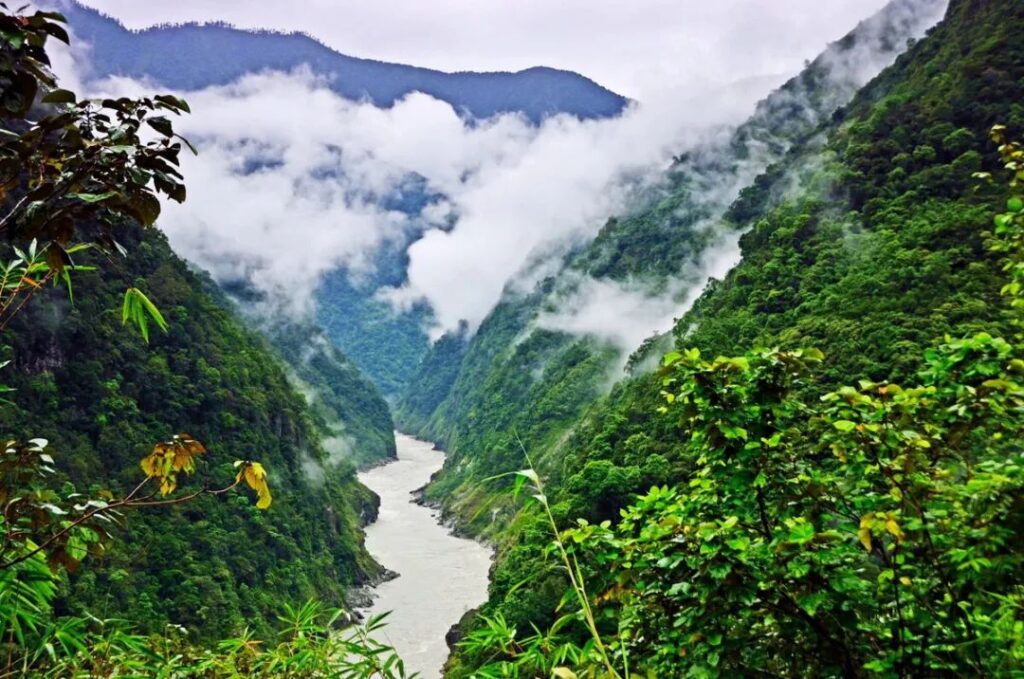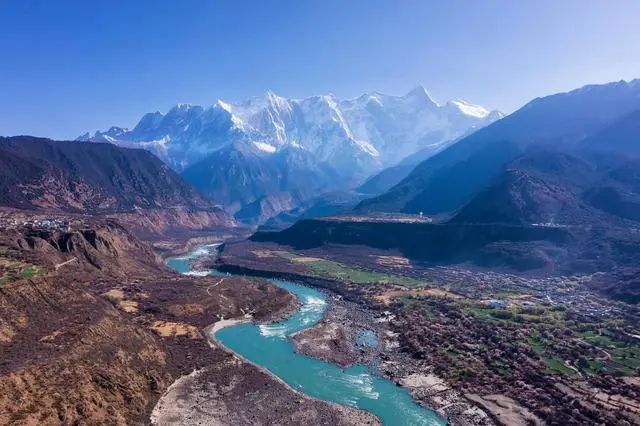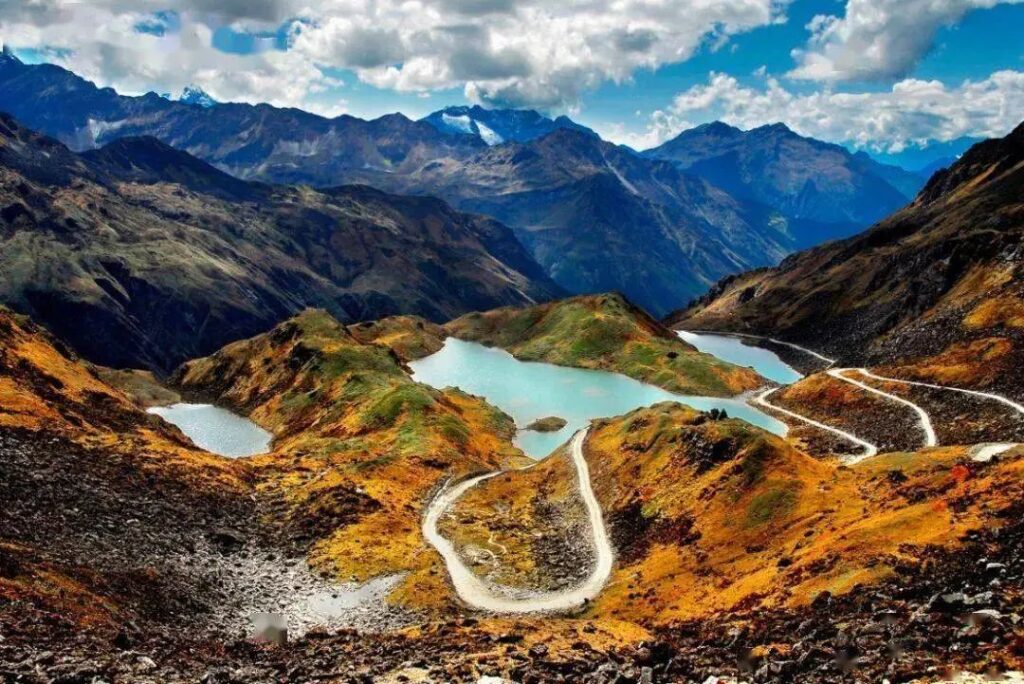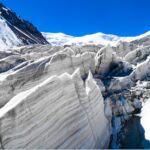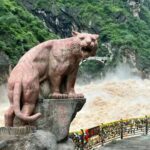Tibet is not just about yaks on the snow-covered plateau, golden temples, dancing Tibetan people, and the world’s highest peak – Mount Everest. It’s also home to the deepest canyon – the Yarlung Tsangpo Grand Canyon.
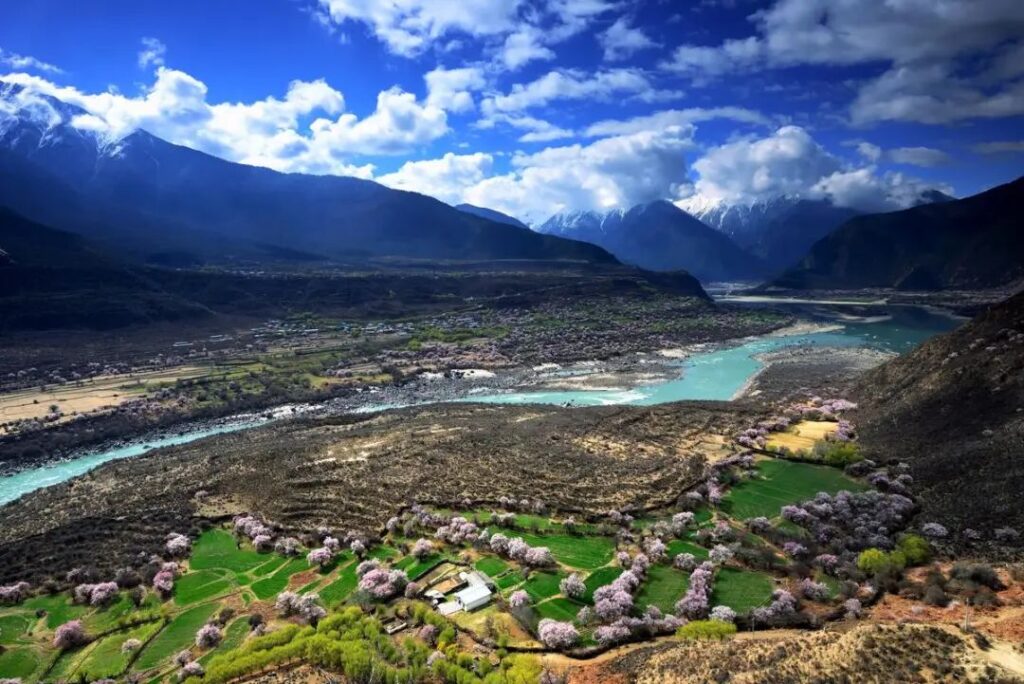
The Yarlung Tsangpo Grand Canyon is the world’s largest canyon, stretching 504.6 kilometers from Mainling County in the north to Medog County in the south, with an average depth of 2,268 meters. The entire canyon area is a treacherous mix of glaciers, sheer cliffs, steep slopes, mudslides, and a raging river with enormous waves, creating an extremely hazardous environment.
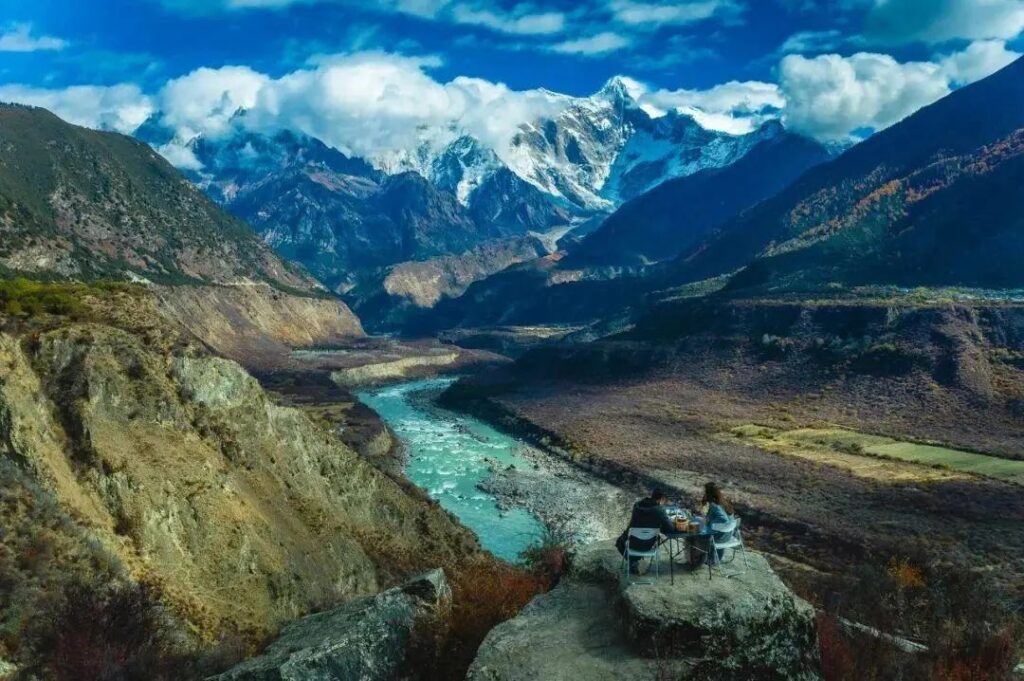
High peaks and deep valleys stand side by side, with a dramatic elevation difference of nearly 10,000 meters, forming the world’s most magnificent landscape. Many areas remain untouched by human feet, truly earning the title of “Earth’s last hidden paradise.”
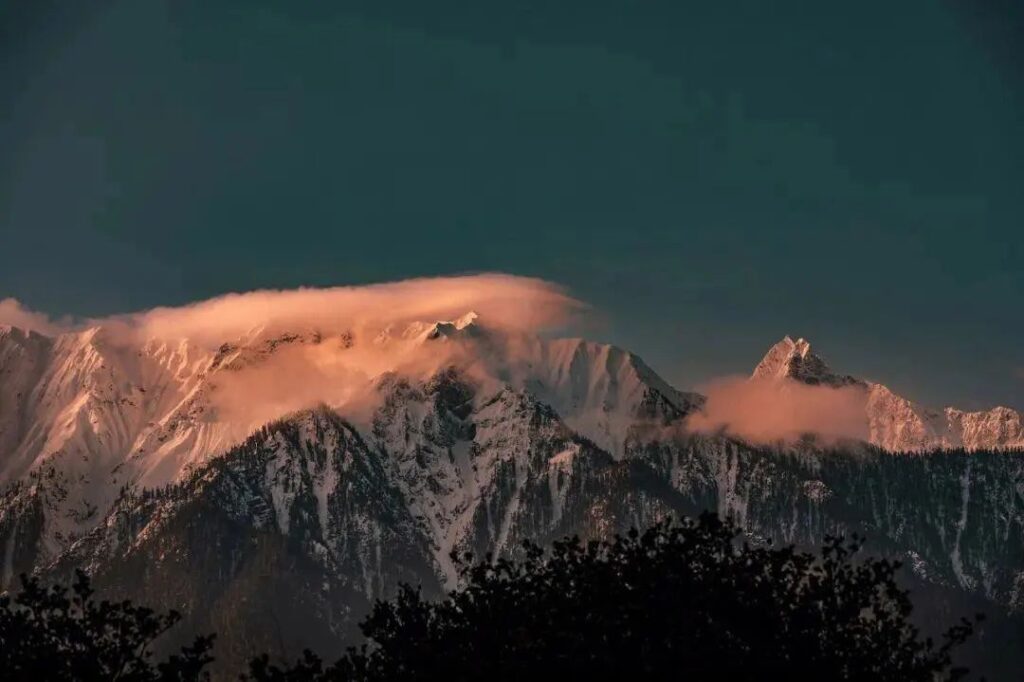
The Yarlung Tsangpo Grand Canyon is set against a backdrop of snow-capped mountains, glaciers, and vast expanses of primeval forests. Shrouded in clouds and mist, it exudes an air of mystery. The waters of the grand canyon range from solid millennia-old ice and snow to boiling hot springs, from trickling streams and cascading waterfalls to the surging river.

The mountains of the canyon vary from tropical rainforest-covered ranges to snow-capped peaks that pierce the clouds, presenting a myriad of forms that seem like divine brushstrokes.
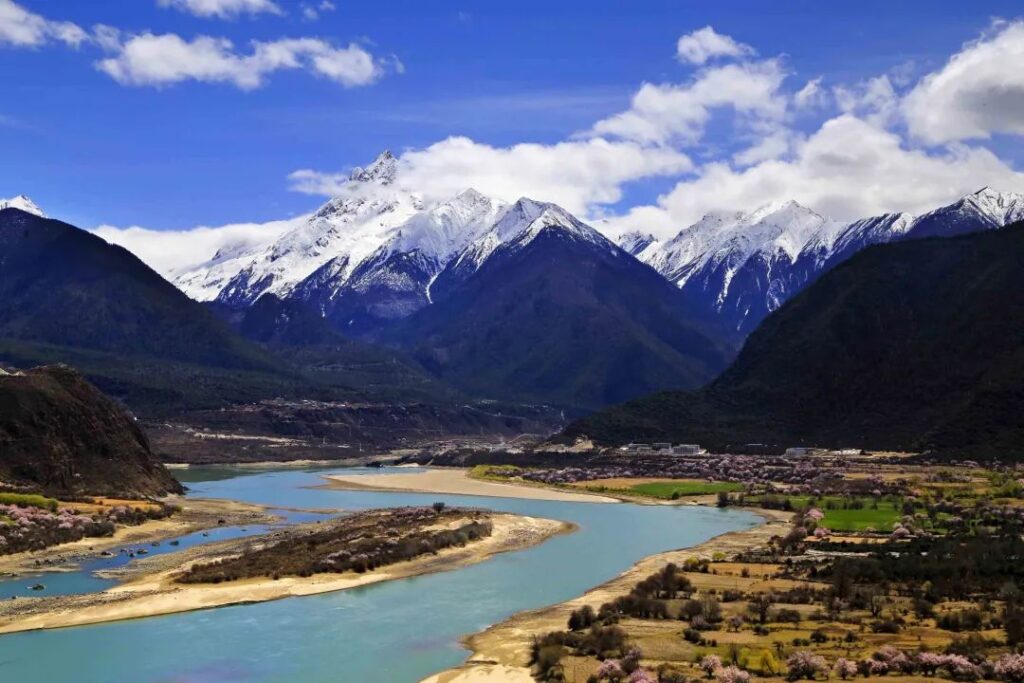
White clouds drift over mountain tops, with snow-covered peaks within arm’s reach. Bizarre rock formations jut out, partially hidden by lush greenery. The mighty Yarlung Tsangpo River flows from the west, suddenly turning and winding around Namcha Barwa Peak in a horseshoe-shaped bend before thundering southward, carving out this massive 504-kilometer canyon on the Qinghai-Tibet Plateau.
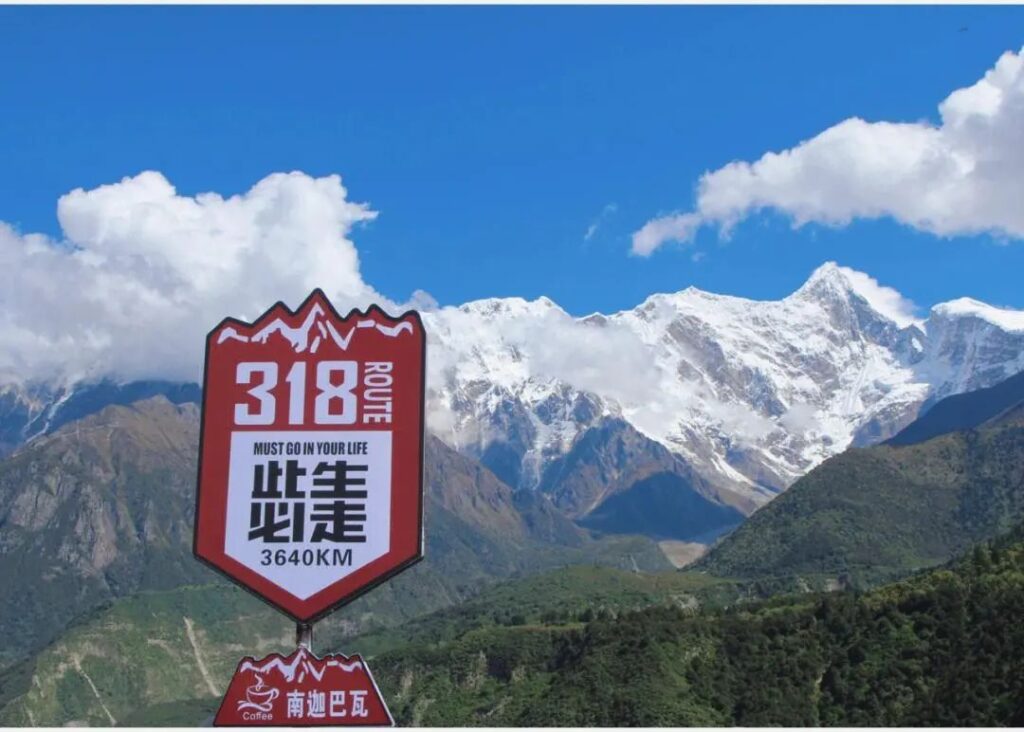
The Yarlung Tsangpo River bed has an average altitude of over 3,000 meters, making it the highest major river in the world. The beautiful legend of the three sons and one daughter of the sacred Gangdisê Mountain adds to the mystique of this awe-inspiring canyon sculpted by nature.
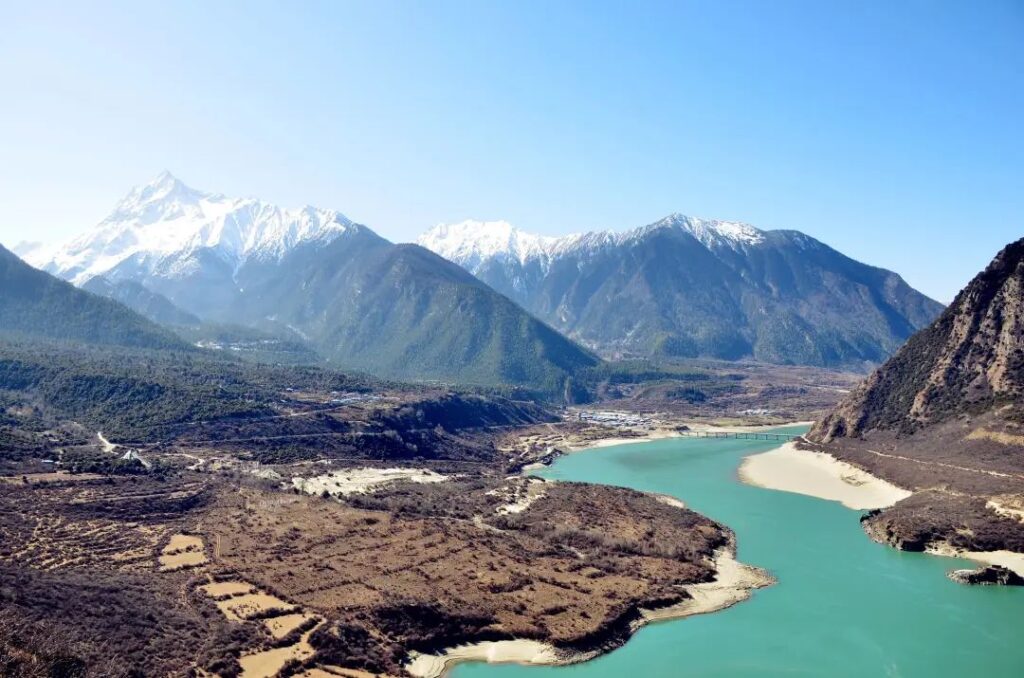
The Grand Canyon was actually formed by the Himalayan orogeny and river erosion. The canyon is deep and narrow, with a relative height difference of 6,009 meters between the peaks on both sides and the valley floor. At its narrowest point, people can converse across the canyon, but it takes at least three days to walk from one side to the other.

The Yarlung Tsangpo Grand Canyon is 154.6 kilometers longer than the Grand Canyon in the United States, which is claimed to be the world’s longest, and more than 2,000 meters deeper than Peru’s Colca Canyon, which is said to be the world’s deepest. Its magnificent beauty is incomparable to any other canyon.
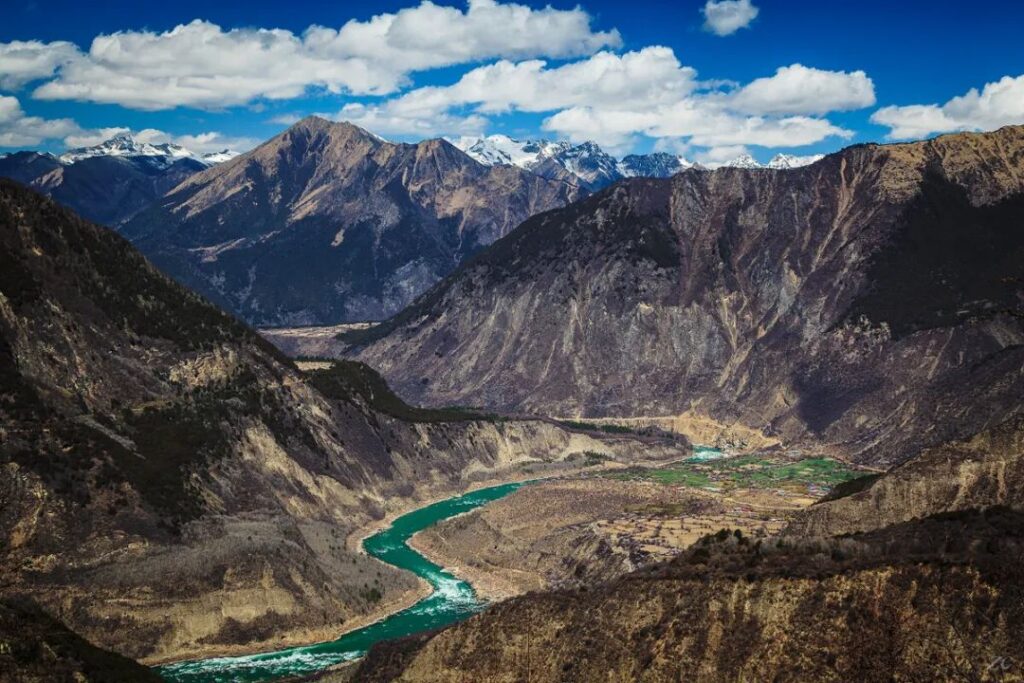
On the same slope of the Grand Canyon, nine vertical natural zones are formed from high to low. Different natural zones at various altitudes present diverse natural landscapes.

Flora and fauna distributed from the cold Arctic to the hot equator can be found here. Many precious trees and flowers grow in places rarely visited by humans, while various wild animals climb and traverse the area, as if unfurling a magical and beautiful scroll in mid-air.
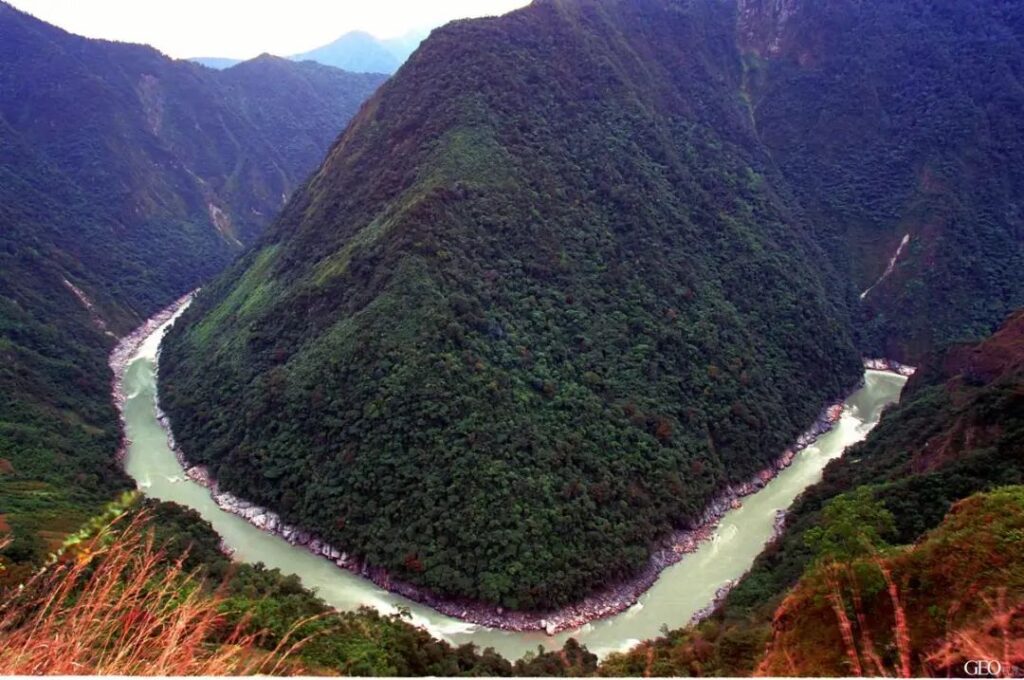
The Yarlung Tsangpo Grand Canyon miraculously provides a passage for the moisture from the Indian Ocean to cross the Himalayas. Like a vertical natural museum, it has preserved many rare animals and plants for humanity.
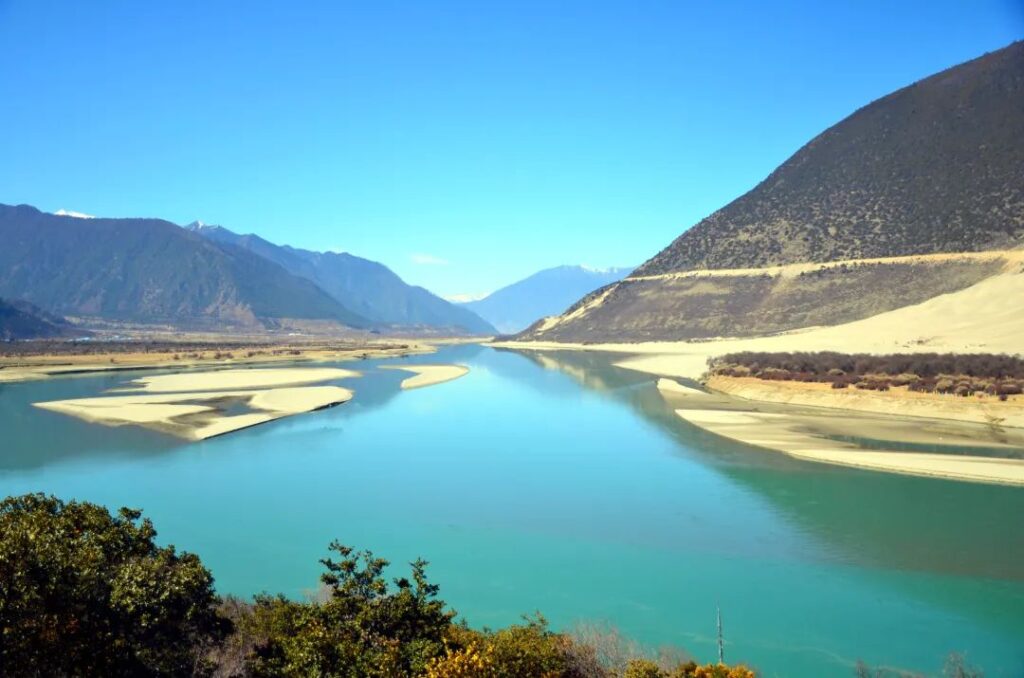
Outside the Grand Canyon, there are barren mountains and snow-covered plateaus. However, upon crossing the mountain pass and entering the Grand Canyon, the valley floor is filled with exotic flowers and subtropical rainforests. The mountainsides are covered with temperate evergreen broad-leaved forests, while cold-climate coniferous trees such as pines and cypresses grow in the higher parts of the canyon.
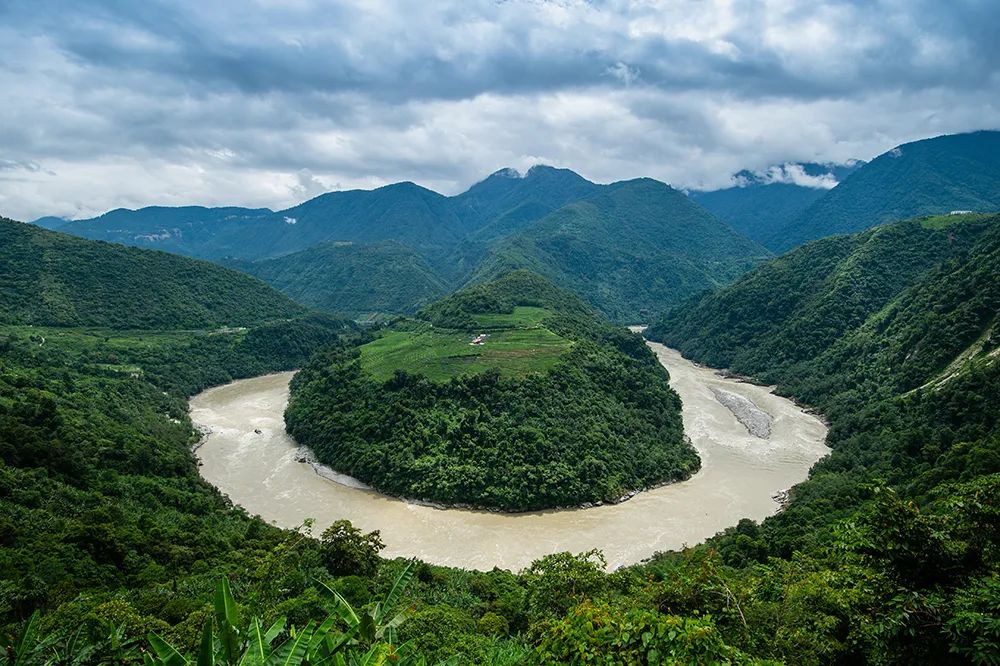
Wooden houses of Tibetan and Monba people can occasionally be seen on the terraces of the Grand Canyon. On the river valley plains, yellow rapeseed flowers and purple-white pea flowers are embedded in the rolling green waves of highland barley fields. This area is known as the “Jiangnan of Tibet.”
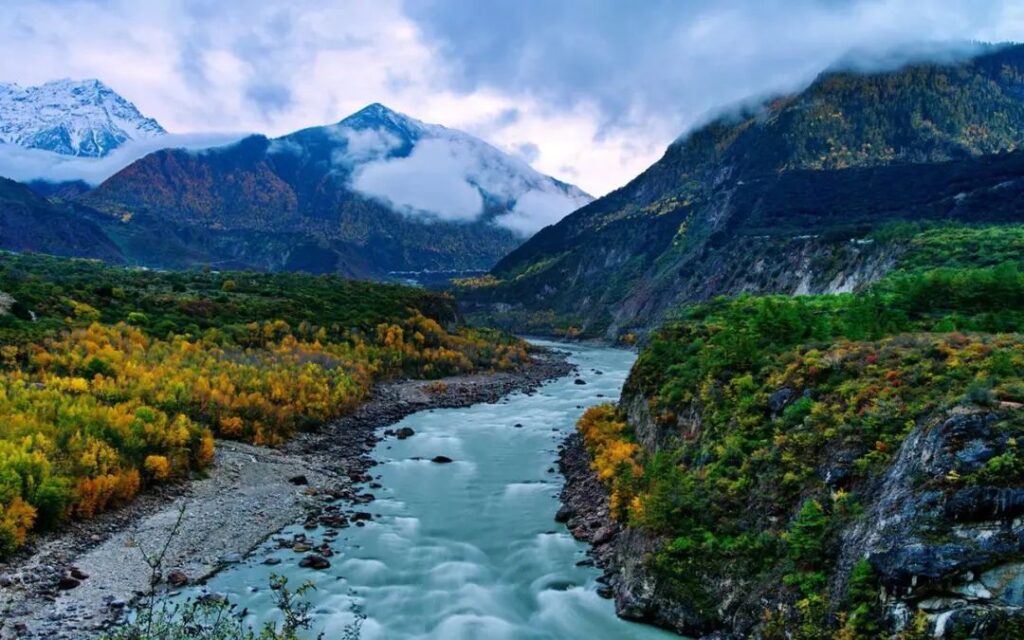
The Yarlung Tsangpo Grand Canyon is the last unexplored region on Earth, the world’s only remaining virgin land. To this day, no one has dared to raft its rapids, and no one has been able to traverse its entire valley floor.
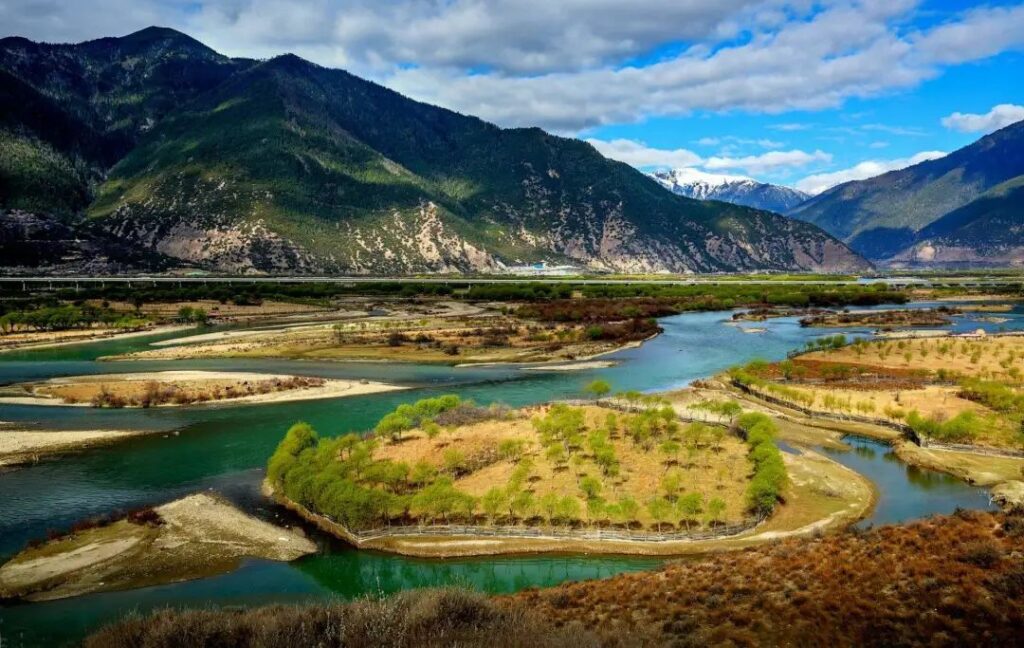
Here you can find the purest sky in the world, the most graceful clouds, the most majestic snow-capped peaks, the most beautiful big bend, and the richest treasure trove.
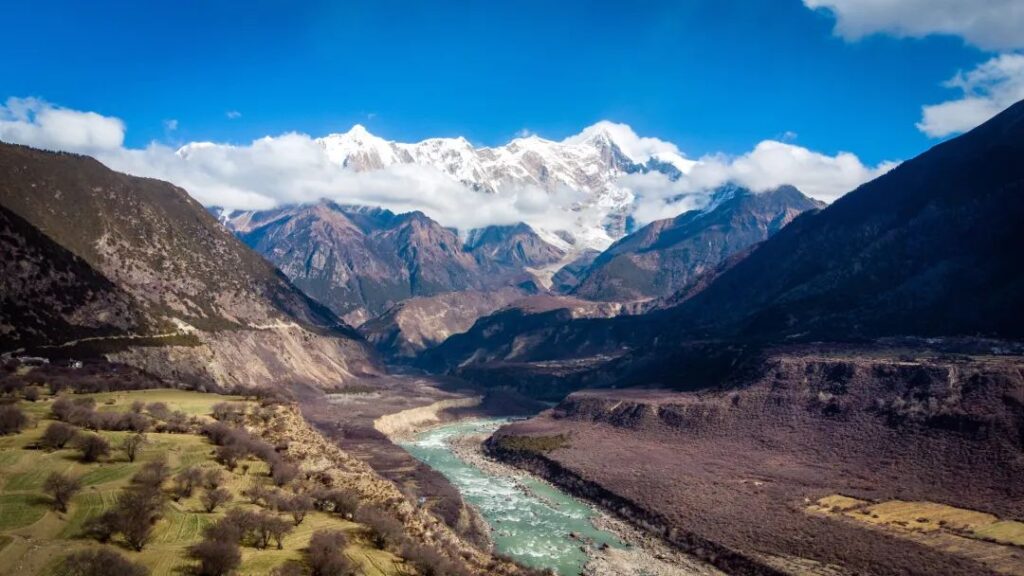
The Yarlung Tsangpo Grand Canyon is listed alongside the Potala Palace and Mount Everest as Tibet’s three world-class tourism resources. One cannot claim to have seen the world’s most magnificent mountains and rivers without visiting the Yarlung Tsangpo Grand Canyon!
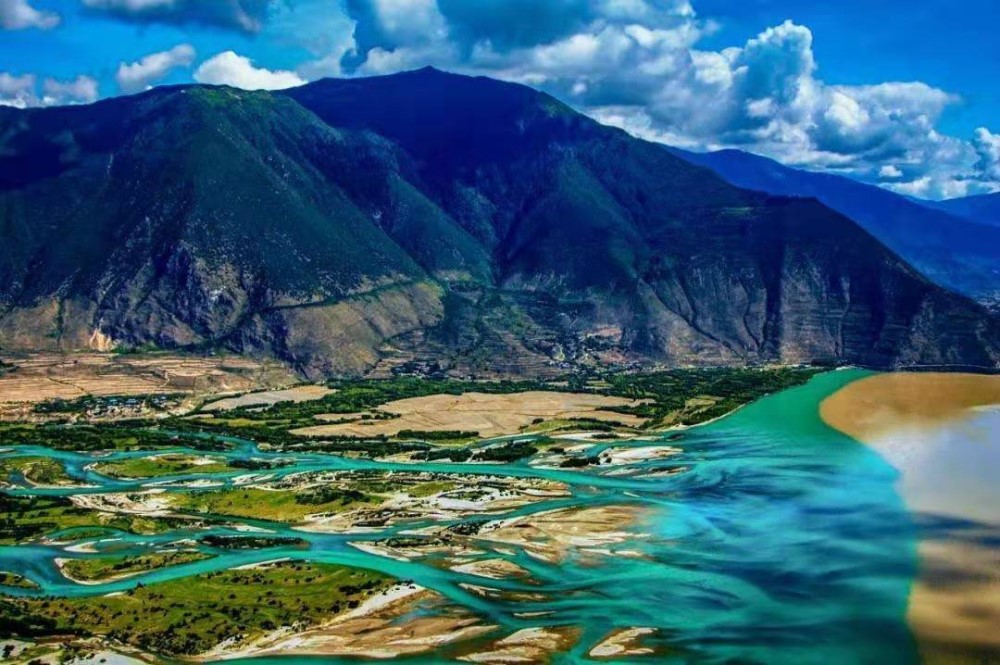
In 2020, the Yarlung Tsangpo Grand Canyon scenic area was upgraded to a national 5A-level scenic spot.
